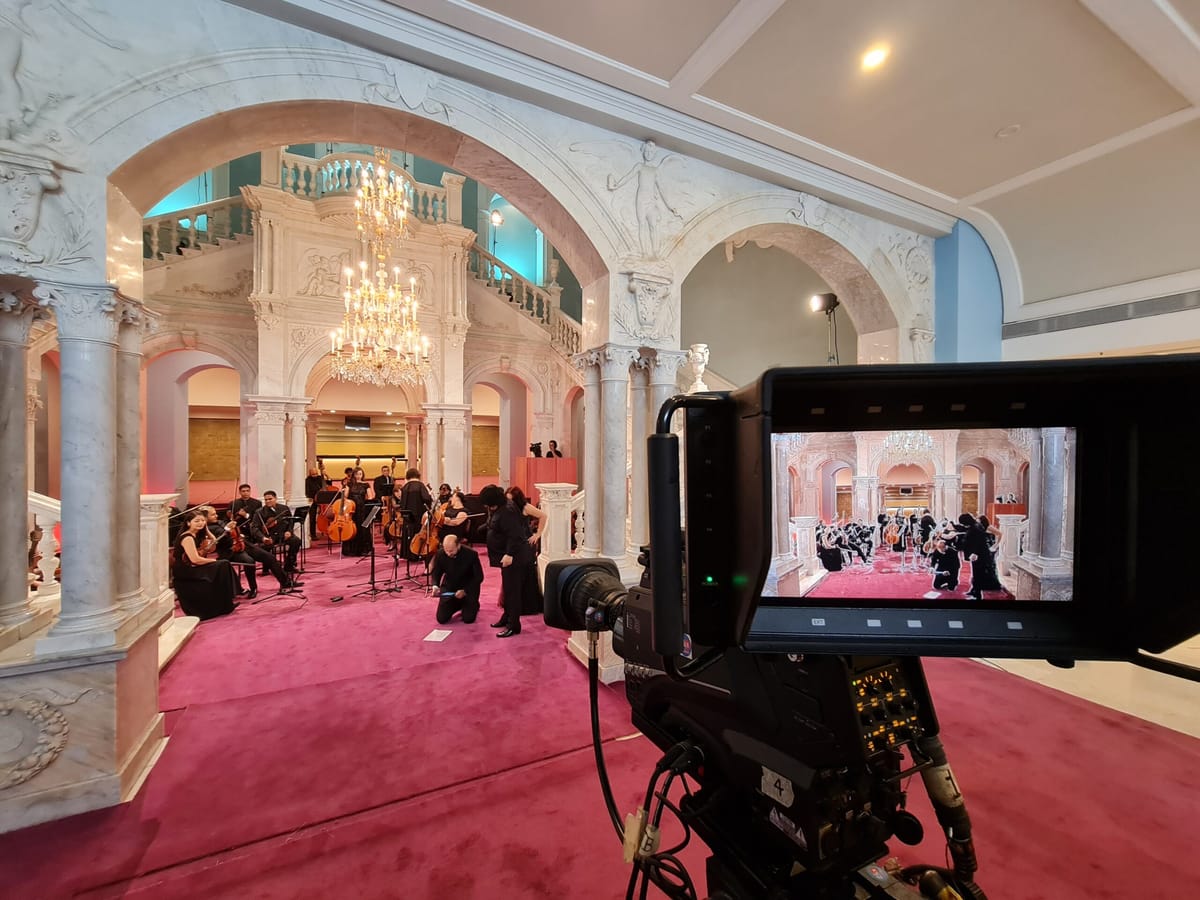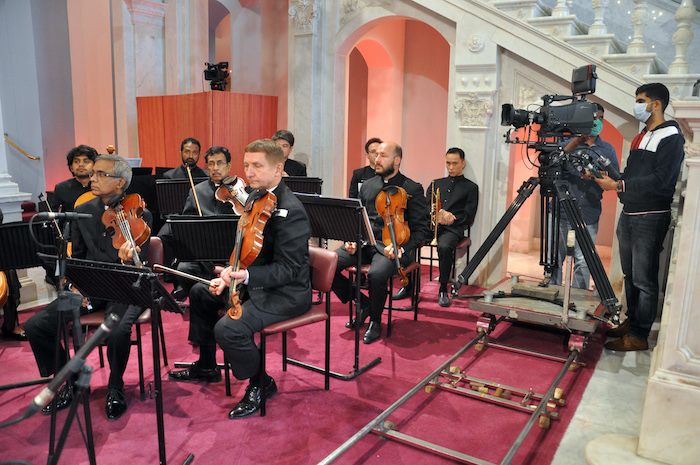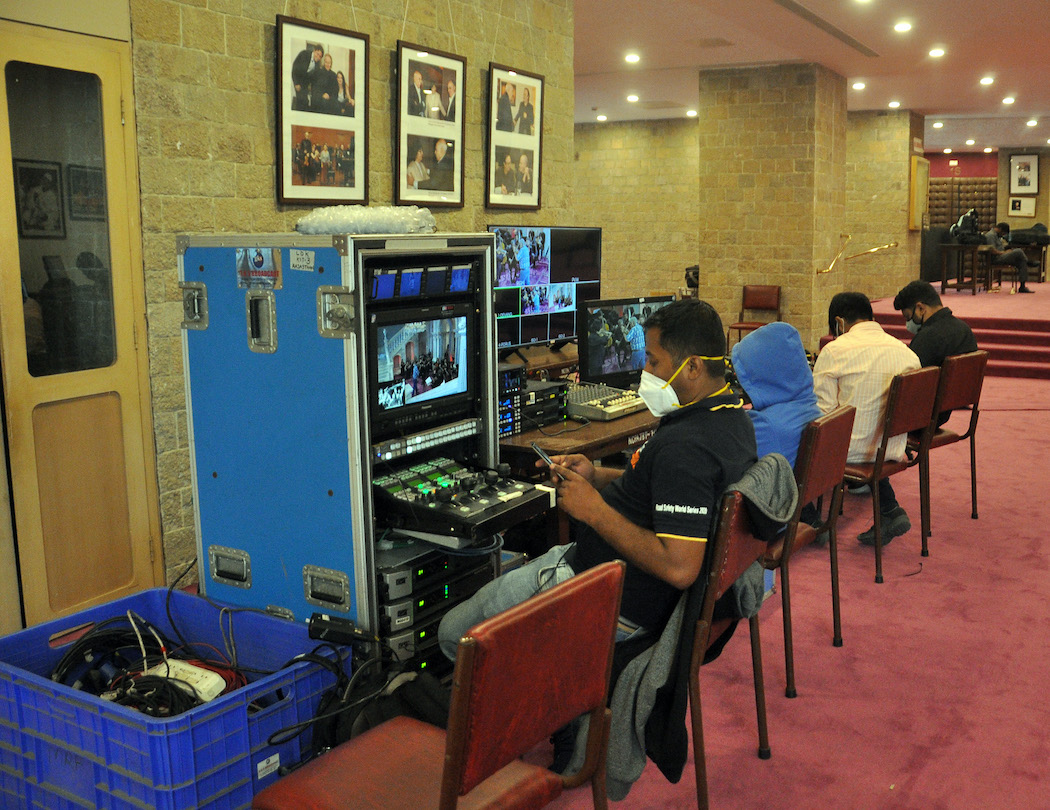The Digital Blueprint

Early on in the lockdown, the Chairman and senior management at the NCPA recognised the need for a digital platform to take its vast archival treasures and newly recorded productions to members, patrons and a worldwide audience. As the mammoth undertaking moves towards its realisation, a look at how the closed gates of the organisation are no indicator of the hub of activity that it has been.
For a performing arts centre that hosts more than 700 events every year, the pandemic cast a pall over its theatres, performances and seasons that had been scheduled much in advance, the curatorial planning for the future, the educational programmes undertaken by the genres, the finances— the very energy that gurgles through a house of culture. The lockdown and its severe impact on the oft-neglected performing arts scene in the country could have been a crippling setback. Yet the NCPA, under Chairman Mr. Khushroo N. Suntook, has been both, a haven of tranquility—in the best Tata tradition, the safety and employment of its executives and staff has been protected—and a hub of activity, wherein in the absence of live performances, the organisation has displayed agility to meet challenges. In addition to moving its operations, and educational and outreach work online, the need to create a digital platform for opening up its fine offerings in music, dance and theatre to its regular audiences and those the world over was soon recognised.

“The pandemic may not bring back audiences to our theatres soon, but we needed to find a way to continue bringing our performances to them. The lockdown also further affirmed our belief that many of our shows deserved a wider audience than the capacity of our theatres. We felt that a new path to augment our visibility and income would be through concentrating on starting a digital division as early as possible which would not only examine the treasures in our archives to present them online, but also organise new recordings of performances by great artistes on the stages of our theatres. This means a comprehensive review of our archive material, and where necessary, to technically upgrade it, add introductions, and as for the new recordings, a professional group well versed in modern techniques is now being put in place. By the time things settle down in a few months, the NCPA hopes to be ready to offer you an unparalleled variety of performances in all its genres. This is not as simple a shift as one thought. The transition has to be delicately and sensitively handled since it’s a whole new methodology for the NCPA,” says Mr. Suntook. He led the organisation with the vision that even though income from the output that the theatres contributed to the NCPA’s sustenance had dried up, the creation of a digital platform was a necessary investment. ‘Going digital’ has been high on the agenda in many areas of endeavour in the world of the performing arts and tapping the reach of the medium is one more step forward in widening the reach of the NCPA. The gathering of top international experts in this area will aid the process.
Building blocks
The digital project commenced with the remit that guides the NCPA. The content to be made available on the platform is to be of the same quality that art lovers associate with performances presented at the NCPA. The key idea goes back to the NCPA’s visionary founder Dr. Jamshed Bhabha whose mission was to present great works of art from all genres. The heads of Indian Music, Western Classical Music, International Music, Dance and Theatre have been working tirelessly to curate fine new performances while working within the limitations of the lockdown, and create a bank of works from their respective genres from the organisation’s rich archive.
“One of the things Covid has taught us is that we can’t always rely on people being able to come to a physical theatre. The driving force is two-fold: to be able to present works online that would normally be presented in a theatre and so we regard the online space as another theatre space or concert hall; and that for a long time, we have been aware that we have got an archive that is second to none. Wherever possible, we would like to share that and the online medium gives us the ability to reach a worldwide audience; people who could not possibly hope to visit our campus,” says Richard Nowell, technical consultant to the NCPA and other international organisations.
From the National Theatre in London and the Metropolitan Opera in New York to international digital platforms like the Berlin Philharmonic Digital Concert Hall, Mezzo, Idagio and Medici TV as well as domestic platforms have been observed closely by those involved in creating a suitable design for the NCPA’s project.

While work is underway at full steam to create a solid body of content for the digital platform, meticulous communication plans are being developed simultaneously to ensure that when the platform is ready to be rolled out, the NCPA’s offerings reach potential audiences the world over.
An obvious physical manifestation of development on the digital front has been the construction of an editing studio, a colour-correction studio, a sound mixing room and a master viewing room. This post-production hub with state-of-the-art computers and equipment will be manned by trained editors and colour correctors. “It is in the very final stages of being ready despite the challenges of getting builders, designers and equipment on site. With the lockdown in place, we are waiting to get back on site in order to commission the studios that have been built,” Nowell informs.
An arduous mission
With an archive spanning five decades and the curveballs thrown by the pandemic, the digital project is not without its share of challenges. “Part of the nature of the pandemic has been a stop-start problem—we were able to reopen the campus and then we had to close again. These things are out of our hands. So, there is a balance to be struck between spending money on, for instance, planning to film new work and not taking too much risk should it be necessary for the authorities to shut the city down again,” elaborates Nowell.
The NCPA archives, built painstakingly over the years, were for the purpose of documentation. Wherever possible, the performers concerned and all other stakeholders are being approached by the five genres and the legal department to make sure permissions are in place, which is a huge undertaking. Work in the background also involves investigating the archives, to convert the various formats in which they were recorded. “You can imagine that over the years, technology has moved from videotapes to CDs, DVDs. There are even some reel-to-reel audio tapes. There has been a steady programme at the NCPA, even before Covid, of converting these to the digital medium but that process has been intensified with a focus on things that might appear on our digital platform,” says Nowell.
The possibilities
With the SOI’s recording of a few concerts for the digital platform, the Indian music genre having done the same and the Theatre department’s online premiere of the digital production of Sea Wall, the presentation of the performances, besides the fact they were shot in the absence of a live audience, is markedly different from the NCPA’s earlier recordings of live events.
“It’s all about emphasis, actually,” explains Nowell. “The emphasis while shooting a live performance is that it should not interfere with the audience or affect that live event.” When there is no audience, the cameras can be put where the requirements of the performance demand, the lighting could be different and retakes are possible too. A concert by the SOI Chamber Orchestra, for instance, was shot in the magnificent Jamshed Bhabha Theatre foyer before the recent lockdown was imposed in Mumbai. Nowell would be less enthusiastic about putting a theatre piece on the foyer’s marble staircase but believes a play in the Open-Air Plaza (OAP) would be fantastic “particularly with the possibility of being able to move people in time and space. A performance could start in the OAP and appear to continue on the roof of the Tata Theatre, for instance, because we can edit it together.”
Behind-the-scenes stories, artiste interviews, dinner conversations after a performance could offer an online audience fascinating insights into how performers feel and how it all comes together. “The possibilities are huge. There are pros and cons, of course. This is very much a time of exploration and information gathering. Our hope is that we will learn a great deal about what works for us rather than simply trying to copy somebody else,” he adds.
A parallel medium
When the audience returns to the theatres, how would the digital project coexist with live performances? “It is universally accepted that there is no substitute for a live performance; the experience of being in the presence of artistes and cognoscenti is unlike any. However, it is dependent upon the cooperation of all concerned and especially the audiences that they maintain discipline and proper social distancing if they want to return to the theatre as fast as possible. The advantage of digital dissemination, however, is that it opens up world-class events to those who cannot attend them in person for geographical or financial reasons. Viewing these programmes, especially when aesthetically filmed, is infinitely more desirable than not attending them at all,” says Mr. Suntook. He also believes that the possibility of greater exposure could also be an ego boost for all those involved in a performance.
Nowell concurs. “There is no question that we do and should regard the digital space as another space and therefore, it would run parallel [to live performances]. The online presence is here to stay and we will find ways of integrating it with our campus activities. The campus activities, in the view of the senior management and mine, are absolutely crucial to the existence of the NCPA. The campus provides a focus for communication, the sharing of ideas across genres and cultures which I don’t think you get online. It sounds a bit counter-intuitive but we have all experienced the oh-no-not-another-Zoom- call syndrome. We are all tired of looking at a screen. It’s a very good second place but no one can argue that it is anything but a second place. I feel strongly that because there is so much available online, the thing that the NCPA has to offer is a breadth of knowledge and a breadth of art forms and we should play to that strength.”
This piece was originally published by the National Centre for the Performing Arts, Mumbai, in the June 2021 issue of ON Stage – their monthly arts magazine.





